A particle is acted by a force F=kx, where k is a +ve constant. Its potential energy at x=0 is zero. Which curve correctly represents the variation of potential energy of the block with respect to x?

1
2
3
4
The correct Answer is:D
For conservation forces, F=−dUdx
ordU=−Fdx=−kxdx
∴∫dU=−∫x0kxdx
∴U(x)−U(0)=−kx22
But U(0)=0 (given)
∴U=−kx22orx2=−2Uk
The represents a parabola, below x axis passing through the origin and symmetrical about the U-axis. this is given in figure (4).
Topper's Solved these Questions
Similar Questions
A particle is acted by x force F=Kx where K is a(+ve) constant its potential energy at x=0 is zero . Which curve correctly represent the variation of potential energy of the block with respect to x
View SolutionA particle free to move along x-axis is acted upon by a force F=−ax+bx2whrteaandbarepositiveconstants., the correct variation of potential energy function U(x) is best represented by.
View Solution
Knowledge Check
A particle is acted by x force F=Kx where K is a(+Ve) constant its potential mwrgy at x=0 is zero . Which curve correctly represent the variation of putential energy of the block with repect to x
A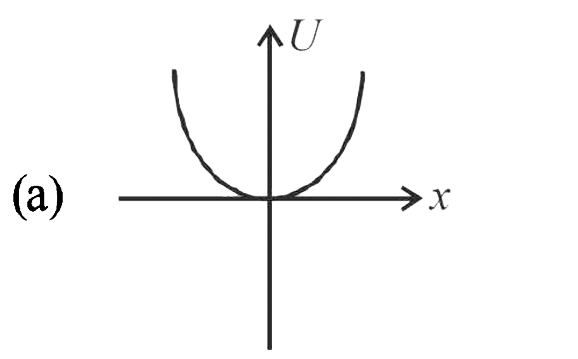 B
B C
C D
D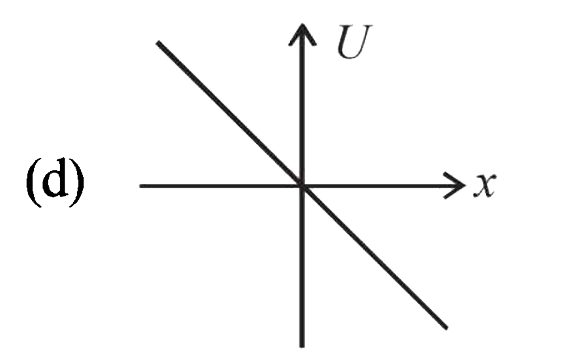
A particle free to move along x-axis is acted upon by a force F=−ax+bx2whrteaandbarepositiveconstants.For ximplies0, the correct variation of potential energy function U(x) is best represented by.
A B
B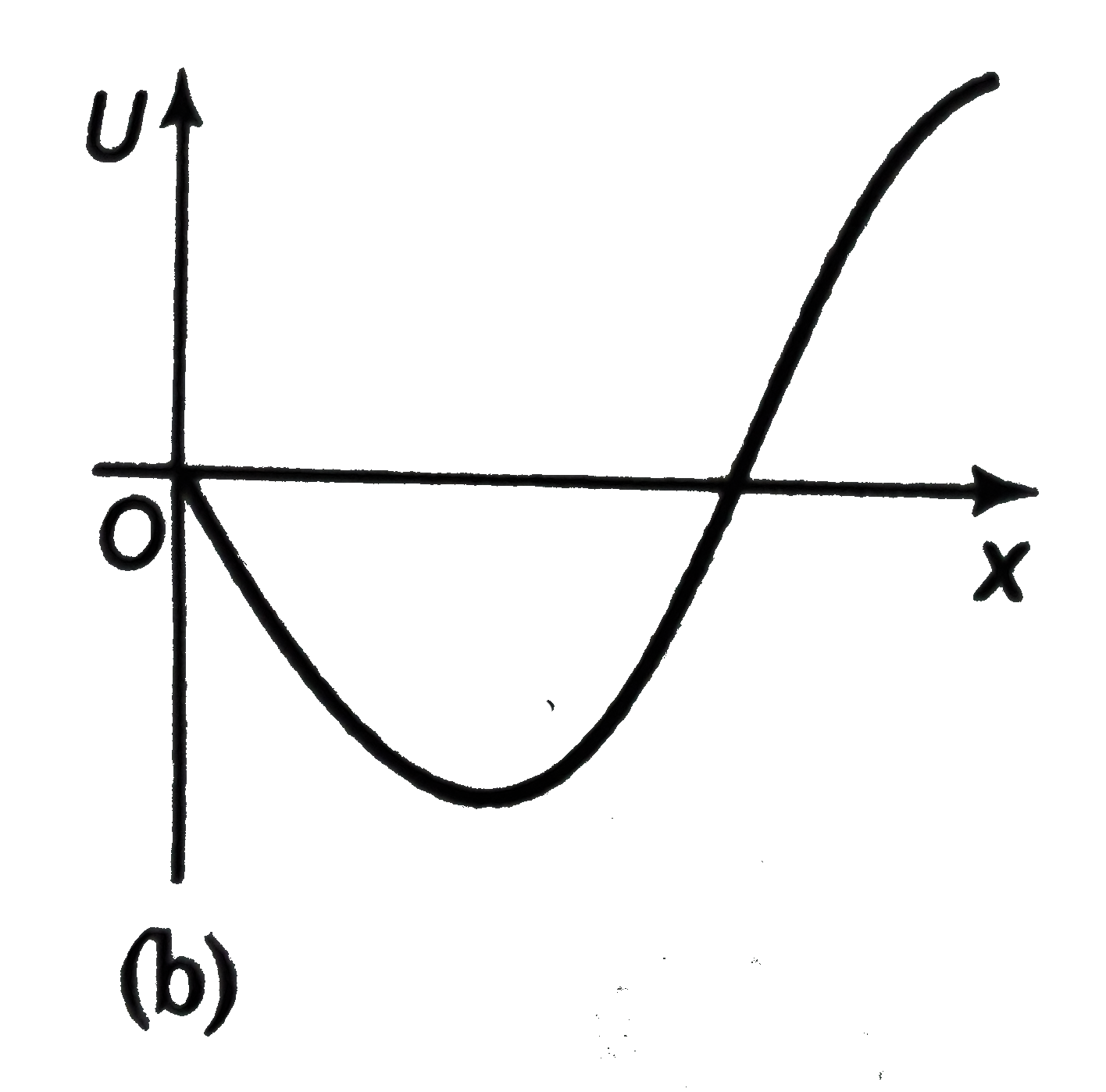 C
C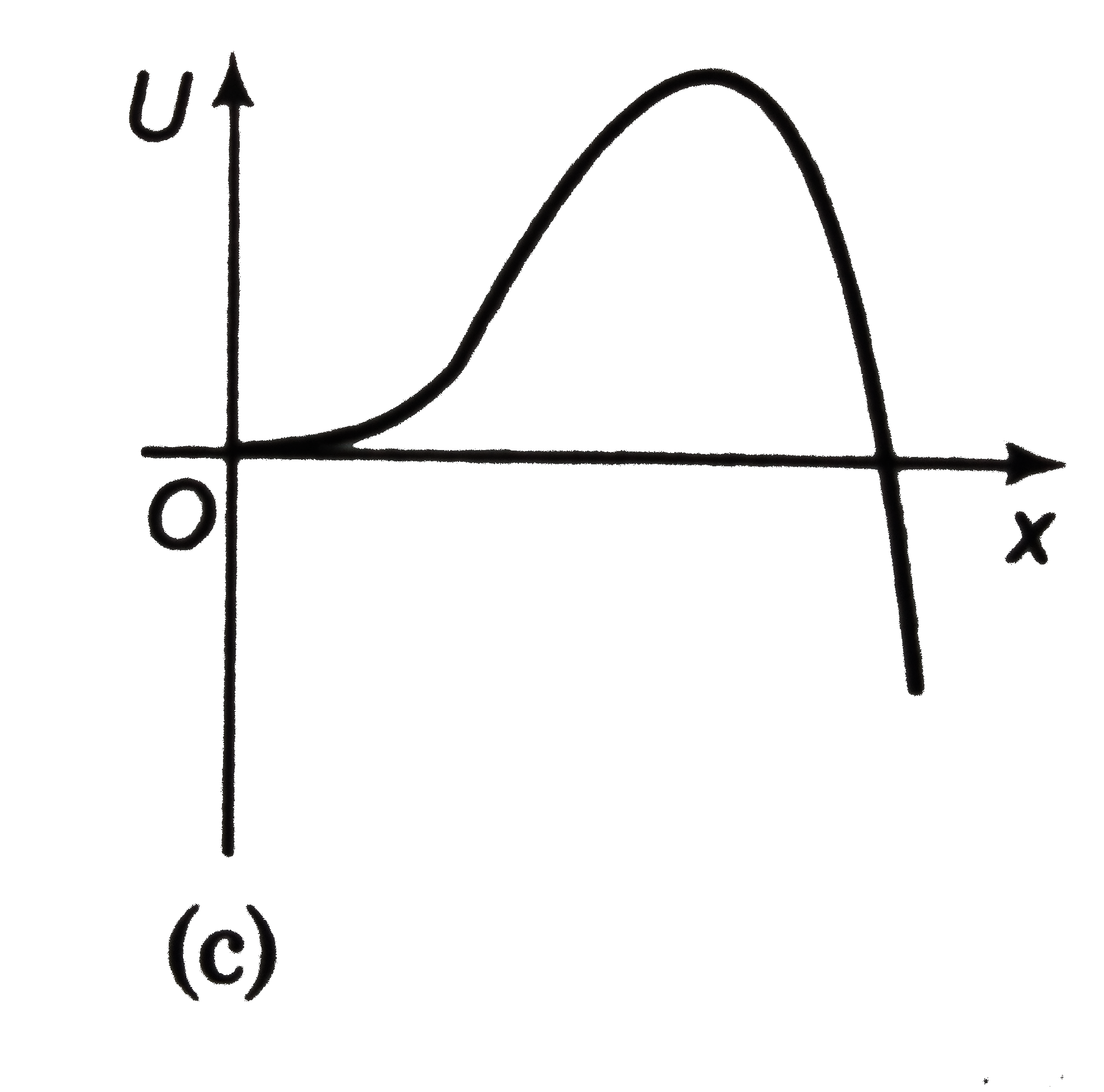 D
D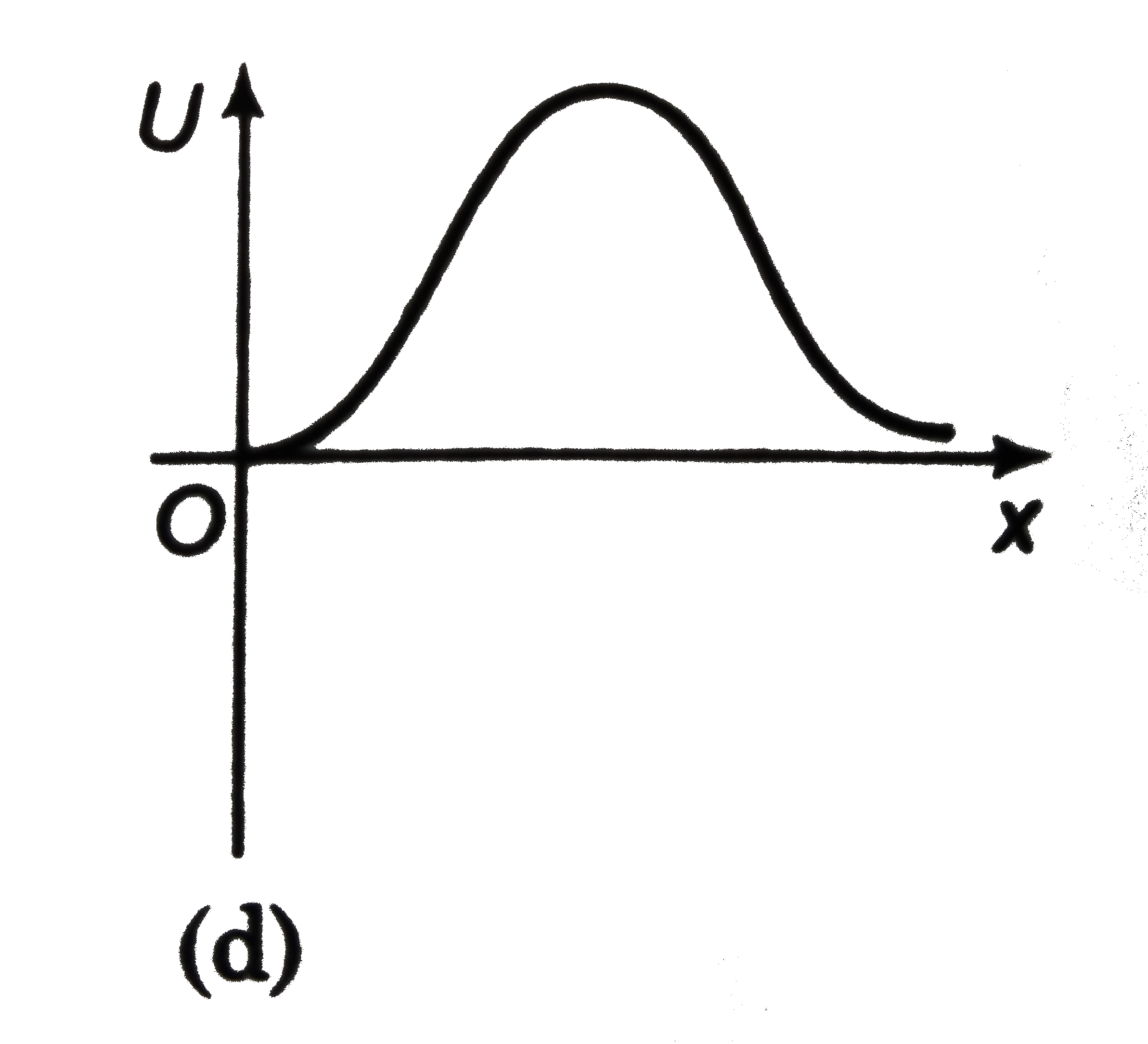
A particle is placed at the origin and a force F=Kx is acting on it (where k is a positive constant). If U(0)=0, the graph of U(x) verses x will be (where U is the potential energy function.)
A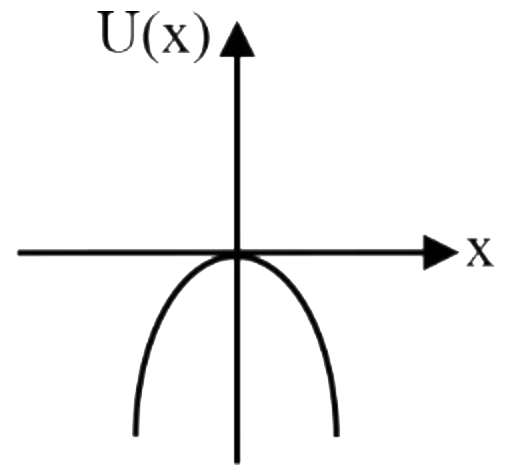 B
B C
C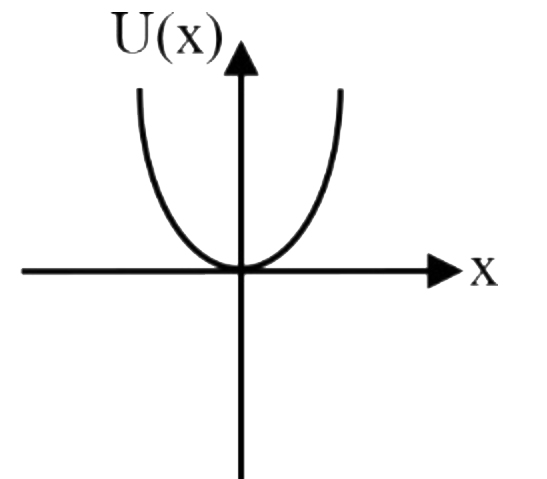 D
D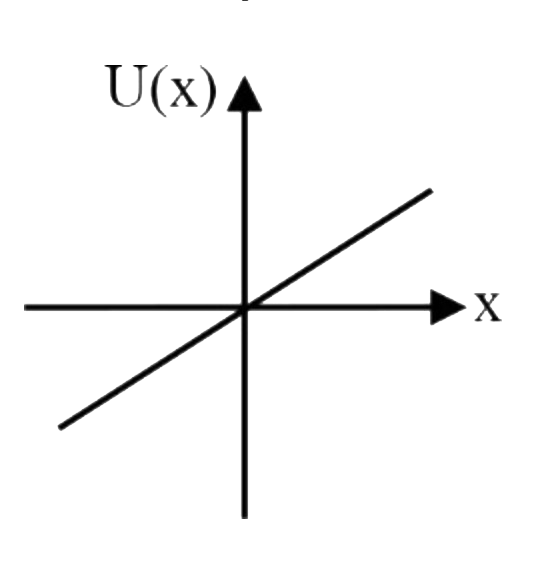
A conservative force held function is given by F=k/r2, where k is a constant.
a. Determine the potential energy funciton U(r) assuming zero potential energy at r=r0.
b. Also, determine the potential energy at r=∞.
View SolutionA conservative force held function is given by F=k/r2, where k is a constant.
a. Determine the potential energy funciton U(r) assuming zero potential energy at r=r0.
b. Also, determine the potential energy at r=∞.
View SolutionA particle is placed at the origin and a force F=Kx is acting on it (where k is a positive constant). If U(0)=0, the graph of U(x) verses x will be (where U is the potential energy function.)
View SolutionIf x,F and U denote the dispalcement, force acting on and potential energy of a particle then
View SolutionA particle is placed at the origin and a force F=Kx is acting on it (where k is a positive constant). If U(0)=0, the graph of U(x) verses x will be (where U is the potential energy function.)
View Solution
